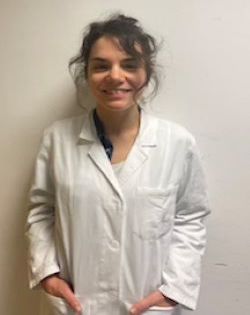
Neuroscience
Rett syndrome and neurodevelopmental disorders

Our research activity focuses on neurodevelopmental diseases, with a particular attention to those caused by mutations in MECP2. To date, there is no cure for these diseases and patients are mainly treated with drugs for core symptoms. This is partly due to an insufficient knowledge of the pathogenic mechanisms, as well as to a complexity of the altered biological processes. Our research aims at identifying the molecular and cellular defects underlying these diseases, and in particular Rett syndrome (RTT), in order to identify new therapeutic targets and biomarkers useful for studying the progression of the disease. Further, we are testing innovative molecular and cellular approaches for the treatment of RTT. Our research uses transgenic mouse models mutated in Mecp2 and primary cultured neurons. Obtained results are validated in mutated human cells.
Scopus Res. ID:6603941648
ORCID ID: https://orcid.org/0000-0003-0820-3155
Research activity
General research
Our research activity focuses on neurodevelopmental diseases, with a particular attention to those caused by mutations in MECP2. To date, there is no cure for these diseases and patients are mainly treated with drugs for core symptoms. This is partly due to an insufficient knowledge of the pathogenic mechanisms, as well as to a complexity of the altered biological processes. Our research aims at identifying the molecular and cellular defects underlying these diseases, and in particular Rett syndrome (RTT), in order to identify new therapeutic targets and biomarkers useful for studying the progression of the disease. Further, we are testing innovative molecular and cellular approaches for the treatment of RTT. Our research mainly uses transgenic mouse models mutated in Mecp2 (or Cdkl5), and primary cultured neurons. Obtained results are validated in mutated human cells.
Identification and characterization of new modifier genes of Rett syndrome
Mutations in MECP2 cause deregulation of a large number of genes. Alterations of some of these could contribute to typical neurobiological defects of RTT; their identification could lead to a better comprehension of the disease and/or the identification of new therapeutic targets.
We have recently distinguished some genes consistently altered both in cellular and animal models of RTT, and in patients. According to their functions, we have initiated projects aiming at characterizing, through approaches of molecular and cellular biology, their involvement in experimental models of the disease, as well as in physiological conditions, if the information available is limited.
New therapeutic approaches for Rett syndrome
Currently, we are evaluating the effectiveness of two pharmacological approaches and a novel molecular therapy for the treatment of Rett syndrome. Efficacy is evaluated testing amelioration of typical molecular defects in cultured cells and behavioral phenotypes in mouse models of RTT.
Exploiting neural precursor cells (NPCs) to identify novel therapeutic approaches for the treatment of Rett syndrome
We have recently obtained several in vivo data proving that NPC transplantation in the Mecp2 KO mouse brain significantly ameliorates the conditions of a mouse model of Rett syndrome, also extending its life span. Consistently, by mean of a transwell-based co-culture system, we have proved that in the presence of Mecp2 KO neurons, NPCs selectively secrete healing factors, rescuing the morphology and synaptic defects that typically characterize Mecp2 deficient cultured neurons. With this project, we intend to use RNAseq and bioinformatic analyses to identify novel therapeutic molecules or molecular mechanisms activated by the NPC-secreted factors. Translational molecules will be then validated in vitro in human RTT neurons and in vivo in mouse models of the disease.








